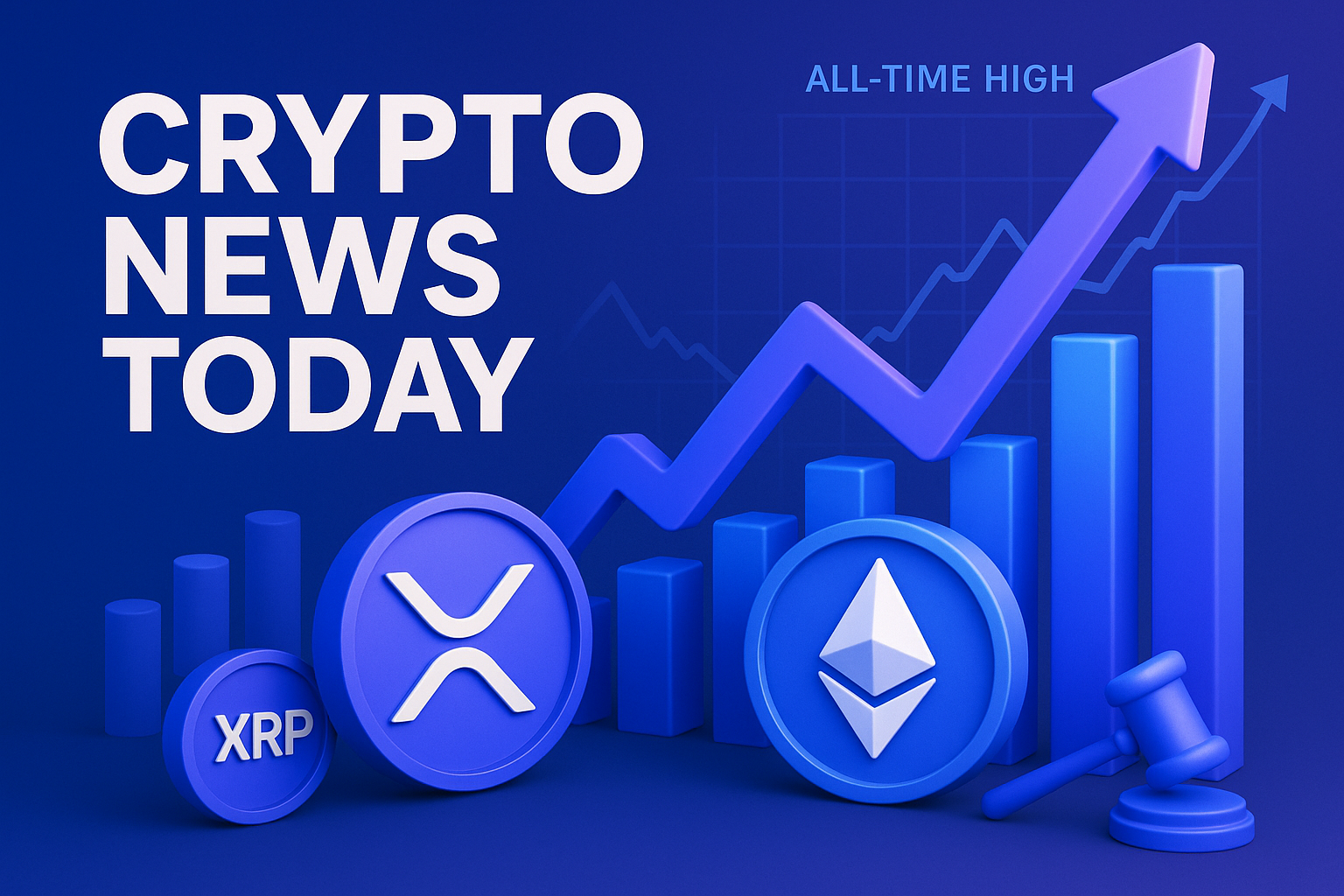If you’ve been glued to Crypto Twitter today, you already know the feed has been buzzing like a hive after Bitwise CEO Hunter Horsley tossed fresh fuel on the never-ending “ETH vs. BTC” fire. Prices didn’t exactly explode—Bitcoin hovered near $34,200 while Ether bounced around $1,780 at last check—but the conversation sure did. Let’s break down what Horsley said, why it matters, and where that leaves you.
Here’s What Actually Happened
During an appearance on CNBC’s “Squawk Box” early this morning (November 3, 2023), Horsley was asked—yet again—whether Ethereum could overtake Bitcoin. He didn’t give the click-bait answer many were hoping for. Instead, he pivoted:
“I don’t think Ethereum needs to replace Bitcoin to be incredibly valuable. Its real contest is with platforms like Solana, Avalanche, maybe even traditional cloud infra, not with digital gold.” —Hunter Horsley, Bitwise CEO
In other words, he’s moving the goalposts. Bitcoin, in his view, is still the reserve asset for the crypto industry, an uncrowned digital gold. Ethereum, meanwhile, is building something closer to a decentralized Amazon Web Services—smart-contract infrastructure that other chains (and yes, some Web2 giants) have to out-innovate.
Why Horsley’s Take Isn’t as Out-There as It Sounds
At first glance, it feels like a polite dodge. But the data actually backs him up:
- Total Value Locked (TVL): Ethereum’s TVL is roughly $23 billion, according to DeFiLlama. That’s still more than the next ten smart-contract chains combined.
- Developer Activity: Electric Capital’s 2022 Dev Report clocked over 5,800 monthly active Ethereum devs. Solana sits around 1,000, while Bitcoin’s core contributors hover near 900.
- Fee Revenue: Since EIP-1559 went live in August 2021, Ethereum has burned over 3.7 million ETH (about $6.6 billion). That’s more protocol-level revenue than any L1 not named Bitcoin.
So yeah, Horsley’s basically saying, “Look, ETH is already winning its own league.” That may sound frustrating if you came for gladiatorial combat with Bitcoin, but I think it’s a more nuanced (and frankly more useful) lens.
Now Here’s the Interesting Part: What Happens If Spot ETFs Land?
You know how everyone is waiting on a Bitcoin spot ETF in the United States? Bitwise is one of the applicants. Horsley slipped in a little teaser: he expects a wave of Ethereum spot ETF filings to flood in once Bitcoin clears the SEC gate.
Some quick numbers for scale:
- Grayscale’s GBTC trust currently manages ~$19 billion.
- Their ETHE product for Ethereum sits closer to $6 billion.
- If even 25% of GBTC-type demand migrates to a regulated ETH ETF, you’re looking at multi-billion-dollar inflows in month one.
Can that kind of liquidity light a fire under ETH? Absolutely. But—and here’s my personal gut check—I’ve noticed ETF hype tends to front-run itself. Remember the ProShares Bitcoin Futures ETF in October 2021? Price spiked 10% then bled for weeks.
Comparing Apples and Oranges… and Maybe Cloud Servers
I get it: you still want a head-to-head tale of the tape. Fine, let’s do one more lap:
| Metric | Bitcoin | Ethereum |
|---|---|---|
| Market Cap | $666 B | $214 B |
| Average Daily Transactions (Oct 2023) | ~330k | ~1.1 M |
| Energy Use | Proof-of-Work (≈95 TWh/yr) | Proof-of-Stake (≈0.01 TWh/yr) |
| Halvening / Issuance Cut | Every 4 yrs (next April 2024) | Dynamic burn + staking (deflationary 10 of last 12 months) |
See the problem? These networks do such different jobs now that comparisons feel like ranking a Tesla against a freight train. Both are engines; both move value; but you pick one or the other depending on the cargo.
What ETH Can Do That BTC Probably Won’t
1. Programmatic Money: With Solidity you can bake conditions (“send 3 ETH only if this NFT ID changes hands”) right into the payment. Good luck coding that on Bitcoin without a side-chain or Taproot wizardry.
2. Decentralized Finance: Uniswap v4’s upcoming hooks mechanism will let devs inject custom code into the DEX’s matching engine. Aave’s v3 already lets you borrow across L2s. Try spinning up that complexity on native Bitcoin and you’ll quickly hit OP_RETURN limits.
3. Native Account Abstraction: Vitalik’s pushing EIP-4337 so wallets can pay gas in any token, enable social recovery, and basically make seed phrases feel Y2K-era.
But Let’s Not Kid Ourselves—Bitcoin Still Owns the Narrative
Ask any normie relative at Thanksgiving what crypto they’ve heard of: nine times out of ten it’s Bitcoin. The “digital gold” meme is sticky, and scarcity math (21 million cap, halvening every 210k blocks) is elegantly simple. Ethereum can feel like a never-ending software upgrade by comparison—Shanghai, Cancun-Deneb, Proto-Danksharding… I’ve been in the space six years and even I get upgrade fatigue.
Your Portfolio: How I’d Think About Positioning
I’m not an advisor, but here’s how I personally approach it. Bitcoin is my ballast: 35-40% allocation, set it and mostly forget it. Ethereum is my growth engine, roughly 25%. The rest? A spicy stew of Solana, Cosmos, and a tiny bet on “weird stuff” like Friend.tech points (don’t laugh; fees already cracked 28k ETH).
If Horsley’s “different lanes” thesis is right, your decision isn’t either/or. It’s how much weight you want in each lane. And remember, correlation often spikes during macro panics—when the Fed sneezes, everything catches a cold.
What Devs Are Whispering in Telegram
I pinged two Solidity engineers I trust. One, building on Optimism, told me: “If rest-staking via EigenLayer works, ETH becomes the risk-free yield asset for all of crypto. That’s bigger than flipping Bitcoin.” The other, a Bitcoin maxi experimenting with Lightning, shot back: “Yeah, and if LayerZero nails omni-chain messaging we’re all rich. Show me production, not PowerPoints.”
Translation: devs are excited but cautious. They know testnets are nice; mainnets are merciless.
Okay, So Could Ethereum Ever Actually Flip Bitcoin?
Sure, in market cap terms it’s mathematically possible—ETH would need to roughly triple versus BTC’s price, or Bitcoin would need to stagnate while ETH rockets. We came close in September 2022 when the merge narrative narrowed the ratio to 0.085. But that squeeze reversed faster than you can say “Celsius liquidation.”
To permanently outrank Bitcoin, Ethereum has to prove three things:
- Monetary Premium: People must want to hold ETH, not just use it as gas.
- Scalability: Rollups like Arbitrum and zkSync have to settle billions of daily transactions cheaply.
- Security: Proof-of-Stake can’t suffer a catastrophic slashing event that shatters trust.
We’re maybe halfway there on a good day.
Why This Matters for Your Portfolio
If you believe in Horsley’s framing—that Ethereum’s real competition is other app chains—then the question isn’t replacement; it’s dominance within its category. Ask yourself: does ETH maintain dev mindshare five years out? Do institutions treat staked ETH like a yield-bearing treasury bill? If yes, the upside is enormous even without a “flippening.”
One Last Tangent: The Cloud Analogy
I used to manage AWS bills at a fintech startup. We never fretted about AWS “replacing” gold bars in the basement. Different problem spaces entirely. Yet Amazon still turned into a $1.6 trillion monster. If Ethereum becomes the default settlement layer for digital commerce, does it really matter whether Bitcoin keeps its orange-coin crown? I’m not so sure.
Bottom Line and What I’ll Be Watching
I’ll keep an eye on:
- ETF filings post-Bitcoin approval window (spot ETH by Q2 2024?)
- EIP-4844 (proto-Danksharding) fee impact—can rollup costs drop 10x?
- The ETH/BTC ratio holding above 0.06—technical support since June.
Could Ethereum replace Bitcoin? Maybe in some metrics, maybe never in others. And honestly, that ambiguity is half the fun in crypto. Grab your popcorn—and maybe rebalance while you’re at it.



